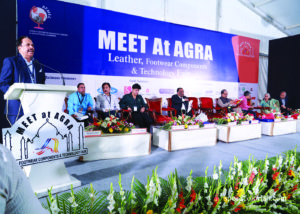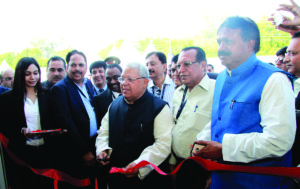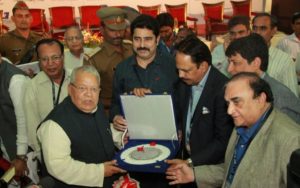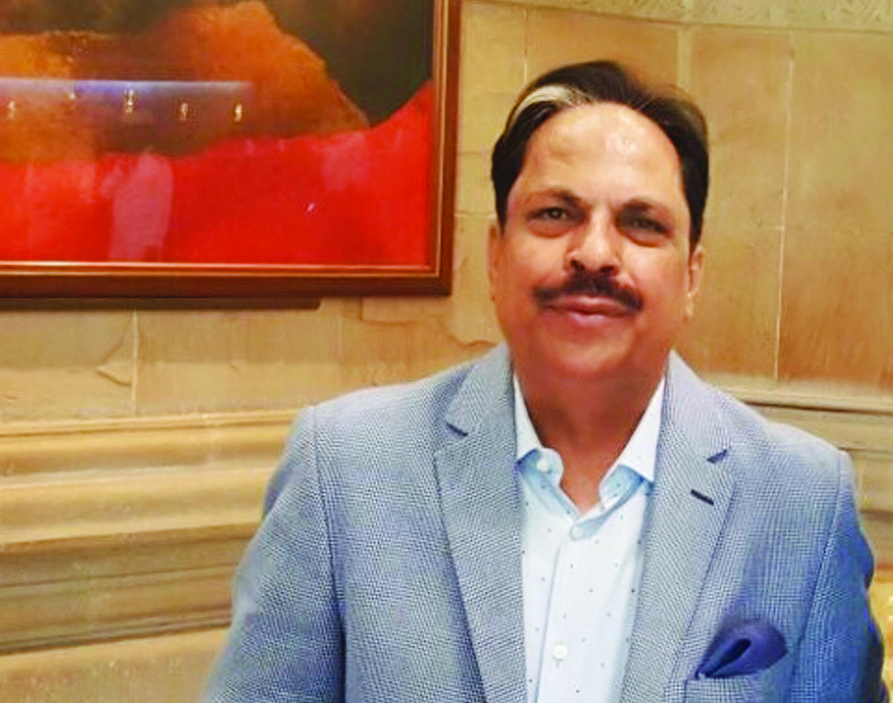Agra Footwear and Manufacturers and Expoters Chamber (AFMEC) remains committed to serving the long-lead planning needs of the manufacturers and exporters. With its actionable representation, it is helping companies tackle business challenges – from rapidly changing global economic trends, governmental policies to new chemical regulations. One of its prominent and consistent initiatives is Meet at Agra trade event which by now has gained global reputation. In an interview with S&A’s Amit Chopra, AFMEC’s president Puran Dawar said, “It is very important that the leather as well as non-leather shoemakers continue to improve their efficiency. India has good leather shoe manufacturers and better quality leather. The workers may not be very productive but they are better craftsmen.”
How is AFMEC evolving?
AFMEC is very excited to move the chambers and is more closely aligned with the constantly changing needs of its members, both at a manufacturing and export level. Meet At Agra fair continues to break records with sold out space and participants from more than 25 countries. It remains committed to serving the long-lead planning needs of the manufacturers and exporters. With its actionable representation, the chamber is helping companies tackle business challenges – from rapidly changing global economic trends, governmental policies to new chemical regulations. The association’s advocacy work provides insight and support on key legislative and regulatory issues, affecting members in global markets, and it maintains educational outreach to allied industry.
How has the industry grown post GST?
GST has brought in a ‘one nation one tax’ system, but its effect in one industry varies from another. Pre-GST, multiple indirect taxes resulted in increased administrative costs for manufacturers as well as for distributors, but with GST in place, the compliance burden has eased. However, declining exports and high infrastructure spending are just some of the concerns of this sector. The Indian leather and footwear industry provides employment to a large number of skilled and unskilled workers in the country. It contributes about 10% of the total annual export, and this value was expected to increase under GST. It may take a while, but in the long run we all will benefit.
How significant was AFMEC’s role in representing the retailers and the exporters at the GST council?
AFMEC played a really valuable role in the reform process. It was a strong voice in reform, and even when some of its members’ interests would have hurt in short term, AFMEC argued in favor of GST. In terms of policy involvement, AFMEC representatives sit on all major policy making bodies of India, focusing on industrial development and innovation. One key role of AFMEC is to promote international industrial co-operation. It identifies and addresses specialized needs of the SMEs sector.
What are some of the challenges, short-term and long-term, that you anticipate to witness?
With the cost of manufacturing touching a new high, manufacturing industries, coupled with global players implementing higher import tariffs on various sectors, many companies are looking at India as a place for outsourcing. So, those who are daring to go and get the business are getting business. There is no way we can achieve the economies of China where they have huge production facilities and significantly lower labor costs and high levels of productivity.
But this segment is mainly non-leather. It is very important that the leather as well as non-leather shoemakers continue to improve their efficiency. India has good leather shoe manufacturers and better quality leather. The workers may not be very productive but they are better craftsmen.
What would be AFMEC’s lookout for 18-19?
AFMEC is the combined voice of manufacturers and exporters in Agra. Being a non-profit making organization, it works with all stakeholders for creating the right environment for the growth of modern manufacturing and export industry in India. We encourage, develop, facilitate and support manufacturers to modernize and adopt best practices that will enchant customers.
Should we hope to see a bigger Meet At Agra’18?
Most people at Meet At Agra’17 felt that the show was slightly quieter compared with the previous editions, reflecting a subdued market in Asia and across many parts of the world. The reasons varied and are complex with sinking demand, high retail inventories following mild winters and the ongoing substitution of leather with non-leather materials, and all these are having an impact on the market. However, we hope that will be different this year; we expect more interest and visitors.
What challenges are the Indian companies facing while going global?
Expanding a business is always a challenge. It requires product developments, positioning, awareness building, distribution, selling and so on. Indian companies face few special challenges when expanding. Negative press covering India’s corruption and inadequate infrastructure has done far greater damage to Indian companies than those companies have done defending their business. It’s very important for Indian companies to Leverage Core Competencies. Indian companies have consistently failed to understand the importance of doing this; aiming instead on delivering many different kinds of products, in order to diversify its offering. To succeed, companies should leverage their core competencies by cutting back in areas they don’t execute well, and focus instead on where they can deliver the most value, most efficiently.To succeed, Indian businesses entering new markets must strive for something better, not cheaper.
What parallels and “lessons learned” can be drawn from European exhibitions?
Even in today’s digital world, where so much business happens online, trade shows still play a vital role for most B2B companies. Over the years we’ve worked with numerous clients on trade show strategies, booth design and promotions. We are always trying to get innovative raw materials as well technological progressive exhibitors.
How well is Make in India initiative doing for shoes and materials manufacturers?
I don’t entirely buy the idea that manufacturing alone can be the solution for India’s growth. It is only part of the larger solution that India needs. The Make in India initiative has showcased India as a potential manufacturing hub in the eyes of the world. What’s vital is to ensure that policy paralysis, bureaucratic bottlenecks and impediments to execution do not handicap the very purpose of the initiative.
Is the global market slow or is there intense competition for Indian exports?
Brexit is the newest worry as the EU accounts for nearly a third of the global trade even though its share in global GDP is 25 per cent.
The American policies, slowdown in regions such as China, Japan and EU will impede the revival of international trade any time soon. That means there will be lower demand for imported goods and services in most parts of the world. Slowing China will impact India’s exports directly — by limiting exports to China and giving tough competition to India’s exports in third country markets as India competes with China in several products starting from apparel and footwear to steel and chemicals.
India’s dream of replacing China as the exporter of low cost manufactured goods as envisaged under PM Modi’s Make in India initiative is going to be seriously challenged by ever-growing competition from Least Developed Countries (LDCs) which are likely to have labor cost advantage over India. India will continue to be under pressure to keep hiking minimum wages despite having lower labor productivity compared to countries such as Bangladesh and Vietnam in key manufacturing industries.










